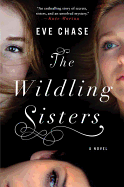
| Publisher: | Putnam | |
| Genre: | Contemporary Women, Family Life, Coming of Age, Fiction | |
| ISBN: | 9780399174131 | |
| Pub Date: | July 2017 | |
| Price: | $27 |
| Fiction |
by Eve Chase
In Eve Chase's suspenseful second novel, secrets threaten the bonds among four sisters. As she did in her debut, Black Rabbit Hall, Chase cleverly alternates between the present and the past, and at the heart of The Wildling Sisters is Applecote Manor, an eerie British country estate.
In the summer of 1959, Flora, Margot, Pam and Dot are sisters living in London with their widowed mother. The girls grow up spending summers at the manor, their father's family estate occupied by their uncle, aunt and cousin Audrey. But Audrey has gone missing, her disappearance is unresolved and her parents are distraught. Despite her absence, the cousin remains a haunting presence throughout the story, tying together the past and present, "the house's magnetic north." The four sisters meet two young men and suddenly their monotonous but peaceful summer turns into one of excitement and adventure, as well as jealousy, competition, secrecy and revenge.
As time passes and its inhabitants come and go, stately Applecote Manor is the one constant in the novel, described by Margot as "creamy and solid, like a block of vanilla ice cream," its vast gardens filled with "clouds of lavender, drowsy bees... fat baby-pink roses." Applecote's new owners discover a house suspended in time, filled with the absence of Audrey and plagued by the past. Their first winter at the house brings a catastrophic snowstorm and a final resolution to the mystery of Audrey's disappearance. Chase's skillful buildup of suspense is thoroughly engaging, keeping readers speculating right up to the dramatic end. --Shahina Piyarali, writer and reviewer
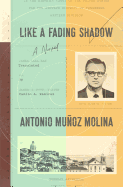
| Publisher: | Farrar, Straus & Giroux | |
| Genre: | General, Literary, Biographical, Fiction, Historical | |
| ISBN: | 9780374126902 | |
| Pub Date: | July 2017 | |
| Price: | $27 |
| Fiction |
by Antonio Muñoz Molina, trans. by Camilo A. Ramirez
In Like a Fading Shadow, Antonio Muñoz Molina creates a fictionalized version of himself, shading the line between reality and imagination in alternating threads. In 1987, a young Muñoz Molina visits Lisbon to complete a novel about James Earl Ray who, in 1968, escaped there after assassinating Martin Luther King, Jr. Muñoz Molina feels ill equipped for the writing task, and chafes at his mundane life, to which he attributes his writing block. He hopes that this trip will allow him to write more passionately. "I did not go to Lisbon to find the settings for a plot that was already in my head. I needed to find the drama there."
Muñoz Molina imagines Ray's thoughts and actions with precision. In Lisbon, he awaits a visa to Angola where he believes he will be welcomed as a hero for what he has done. Yet his existential dread is all too real. "Sometimes, in moments of extreme isolation, fatigue and insomnia, he feared being dead, a ghost, and not knowing about it." Evading capture further magnifies this fearsome perception of not existing.
Muñoz Molina, visiting Lisbon 30 years later as a decorated writer, has replaced his tortured drive to create with a more mature outlook about art and inspiration. He writes, "Literature is built with things that exist and things that do not," and what is real and what is not becomes irrelevant in this masterly and hypnotizing novel. --Cindy Pauldine, bookseller, the river's end bookstore, Oswego, N.Y.
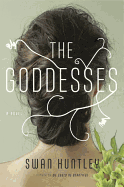
| Publisher: | Doubleday | |
| Genre: | Psychological, Contemporary Women, Family Life, Fiction | |
| ISBN: | 9780385542210 | |
| Pub Date: | July 2017 | |
| Price: | $26.95 |
| Fiction |
by Swan Huntley
"We came here to escape." From the outside, it might look like a dream: moving the family to Hawaii, career advancement, surf and sand for the kids. Nancy and Chuck and their teenage twin sons, Cam and Jed, set up house in Kona. The boys are "stoked" at the opportunity, but Nancy isn't. She is furious that Chuck cheated on her back in San Diego, and exasperated with her boring, predictable self. She hopes that Hawaii will be a new beginning. She switches things around, starts eating healthier and goes to morning yoga classes on the beach, and that's where she meets Ana.
Anae helps Nancy trade in her minivan for a BMW convertible. They spend their days lolling in Ana's Jacuzzi, at her little pink house on the beach. Nancy starts to stay out some evenings, leaving her husband and sons to prepare their own dinners, because her new friend needs her. A warning tone, though, creeps into Nancy's narrative voice: she is a bit too easily taken in, Ana a bit too needy.
The Goddesses by Swan Huntley (We Could Be Beautiful) is a novel of lush green foliage, brightly colored hibiscus, new beginnings and old mistakes: hope and betrayal twined together. Huntley's prose is clipped, declarative: "Our cars arrived. We'd had them shipped." Her characters are adequately developed, her setting evocative, but it is the stealthily twisting plot that makes this novel sparkle. She offers an earnest, likable protagonist in Nancy, then plunges her into psychological challenges she never saw coming. Even in paradise, beautiful exteriors are not necessarily to be trusted. --Julia Jenkins, librarian and blogger at pagesofjulia
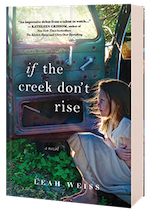
| Publisher: | Sourcebooks Landmark | |
| Genre: | Small Town & Rural, Literary, Coming of Age, Fiction | |
| ISBN: | 9781492647454 | |
| Pub Date: | August 2017 | |
| Price: | $15.99 |
| Fiction |
by Leah Weiss
Set amid the jarring poverty of 1970s Appalachia, Leah Weiss's inspiring debut novel is steeped in atmosphere, ingenuity and heart. If the Creek Don't Rise is Sadie Blue's story, told from the perspective of a cast of fascinatingly robust characters who populate the downtrodden North Carolina town of Baines Creek.
Sadie, pregnant and newly married to Roy Tupkin, has experienced hell and heartache over her 17 years. Abandoned by her mother as an infant, orphaned when her father died when she was an adolescent, Sadie lived with her cold, curmudgeonly grandmother, Gladys Hicks, until she tied the knot with Roy only days prior to the novel's opening. And so far, her honeymoon has consisted of violent beatings and berating tongue-lashings. "The face in the cracked mirror shows another loose tooth, a split lip, and a eye turning purple. I don't see me no more in that slice of looking glass. It's a strange feeling thinking the face in the mirror is somebody else." The townsfolk aren't blind to Sadie's struggles, and most pity her, but feel there is nothing they can do to intervene. If they try, it will only make Roy angry and drive him to beat her even more. Others look at Sadie in disdain and think she is reaping what she sowed for taking up with Roy in the first place.
Despite the evil treatment at the hands of her husband and the lack of help from the town, Sadie is filled with hope for her baby. She cooks and sings and helps others even less fortunate. Then, when Kate Shaw arrives in Baines Creek to fill the teaching vacancy in the one-room schoolhouse, Sadie finds more meaning for her life--an opportunity to learn to read, as well as a new friend. Sadie carries around a treasured and tattered country music magazine because it features her beloved Loretta Lynn, a successful woman who clawed her way out of a Kentucky holler much like Baines Creek. As Sadie tells Kate, "Miss Loretta is a miracle to me." The town preacher, Eli Perkins, has always read the article to her, but Sadie delights in the idea of reading the words for herself. Regardless of Roy, Kate assures Sadie, "If you want to read, you will read."
As Kate and Sadie's friendship blossoms, Kate is determined to give Sadie the tools to help herself. But Roy is filled with a dark evil; he's suspicious and resentful of Kate. Her good intentions may backfire and put Sadie and her unborn baby in more danger than ever.
In addition to the voices of Sadie, Kate, Eli, Gladys and Roy, Sadie's story broadens through the perspectives of her compassionate aunt, Marris Jones; Eli's hard-hearted, spinster sister, Prudence; Roy's friend Billy Barnhill, who harbors a not-so-secret love for Sadie; the wonderfully eccentric author Birdie Rocas; and Tattler Swan, a boy who's both observer and mouthpiece for Jerome Biddle, a kind, poetic man fiercely devoted to Sadie and Kate. Each character provides more substance to Sadie's story, and they also tell the tale of Baines Creek itself. The history, the diversity, the beauty and the pain of this Appalachian hamlet are sketched out through the lives--and unique voices--of the novel's 10 narrators. Readers will likely come away wanting more of at least one, if not all, of these colorful characters.
Weiss's vividly realized settings and well-researched regional touches (from moonshine to ginseng, coal mining to Mother Jones) ensure authenticity throughout the novel. But it's the dialogue--both internal and external--that stands out, rendering the mountains and hollers of Appalachia and those who call it home in distinct and remarkable tones. The contrast between uneducated, naïve but kind Tattler ("What started as a regular day of fishing turned into commotion that don't usually live here. Usually things are pretty much like they supposed to be, cept today") and educated, feminist Kate ("This protracted scene in primitive Appalachia--in the throes of another angry storm that refuses to end, when political assassinations and civil rights battles and the birth control pill change tomorrows down below--is timeless and tiring") reflect the author's careful awareness of the size of their worlds as well as their vocabularies and level of education. Weiss also manages to sneak in smart humor through expertly crafted exchanges between characters, like when Birdie is explaining to Kate that her crow is bringing her various items belonging to Roy:
" 'I hear you Birdie, although I find it impossible to believe the crows know what belongs to Roy. You have to admit, it sounds far-fetched.'
'Far-fetched or close-fetched, these here things is Roy's things, and the crows bring em.' "
Birdie may not know grammar, but her play with language is both funny and reflective of her broad knowledge beyond book learning. The educated, articulate Kate learns many lessons from the people of Baines Creek, as will readers. Weiss's attention to these kinds of details make If the Creek Don't Rise an engaging page-turner and the characters who populate those pages realistic enough for readers to passionately connect with, whether through an empathetic enjoyment, a delightful fascination or a raging disdain.
If the Creek Don't Rise is a satisfyingly complete novel, but it also manages to leave Weiss room to return if she chooses. With its bewitching residents and rugged landscape, a journey to Baines Creek is a trip worth taking, and Weiss is likely to find many readers eagerly willing to travel with her again. --Jen Forbus
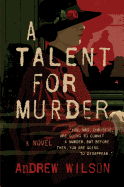
| Publisher: | Atria | |
| Genre: | Mystery & Detective, Fiction, Historical | |
| ISBN: | 9781501145063 | |
| Pub Date: | July 2017 | |
| Price: | $26 |
| Starred | Mystery & Thriller |
by Andrew Wilson
Andrew Wilson, best known for his biographies of Patricia Highsmith (Beautiful Shadow) and Sylvia Plath (Mad Girl's Love Song), smoothly moves into mystery writing with the aptly titled A Talent for Murder. In it, he imagines Agatha Christie at the center of a diabolical cat-and-mouse battle with a deranged physician.
In 1926, after her sixth novel, The Murder of Roger Ackroyd, brought her great acclaim, Christie disappeared from her home. Thousands of police and volunteers joined a 10-day manhunt before she was found. While Christie never discussed her disappearance, Wilson uses this headline-grabbing incident to create a fast-paced, pleasingly twisted and creepy thriller. Christie is being blackmailed into committing a murder for the sadistic, bearded Dr. Patrick Kurs, who reeks of a "poisonous cloud of halitosis." Can the distraught Christie figure out a way to turn the tables on the deranged doctor without imperiling the lives of her young daughter and philandering husband?
A Talent for Murder reads like an amalgamation of a clever Agatha Christie puzzler with the darker characters and psychological insights found in Patricia Highsmith's thrillers. Wilson alternates first-person chapters from Christie's point of view with third-person chapters following a charming amateur sleuth named Una Crowe--who is smarter than the police (they think Christie is dead) but may unwittingly be putting herself into the path of Christie's tormentor. With strong characters, shrewd plotting and a skillful blending of fact and fiction, A Talent for Murder is a compelling period mystery that will keep whodunit fans captivated. --Kevin Howell, independent reviewer and marketing consultant
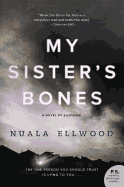
| Publisher: | Morrow | |
| Genre: | Psychological, Contemporary Women, Suspense, Thrillers, Fiction | |
| ISBN: | 9780062661968 | |
| Pub Date: | July 2017 | |
| Price: | $15.99 |
| Mystery & Thriller |
by Nuala Ellwood
When her mother dies, Kate returns home to Herne Bay in Kent, England, from Syria, where she was stationed as a war reporter. Staying in her mother's house, she sees a small boy in a neighbor's backyard who comes out only at night, at times seemingly calling out to her for help.
But when Kate reports her sightings to the police, the neighbor--an Iraqi refugee--denies having a child. Is Kate's post-traumatic stress disorder after witnessing the horrors of war making her hallucinate?
When she gets called back to Syria, Kate asks her estranged sister, Sally, to keep an eye out for the boy at the neighbor's house. But Sally, who resents Kate for many reasons--real and imagined--going back to their troubled past, has sunken deep into the bottle and has no intention to help Kate or anyone, including herself, in any way. Sally soon learns to regret not heeding Kate's plea.
No matter where readers think Nuala Ellwood's My Sister's Bones is headed, their guesses will likely be wrong. When the story seems to be going one way, Ellwood blows it up and forces readers to reconsider events from a different perspective. Kate's point of view is an important one to have, since it explores the symptoms of PTSD and engenders compassion toward those living with it (Ellwood received an Arts Council grant to research the condition). Though the prose contains distracting redundancies--"I nod my head," "I shrug my shoulders," etc.--this psychological thriller is filled with surprises. --Elyse Dinh-McCrillis, blogger at Pop Culture Nerd
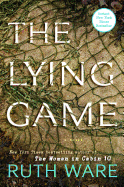
| Publisher: | Scout Press/Gallery | |
| Genre: | Psychological, Suspense, Thrillers, Fiction | |
| ISBN: | 9781501156007 | |
| Pub Date: | July 2017 | |
| Price: | $26.99 |
| Mystery & Thriller |
by Ruth Ware
Fans of Paula Hawkins and Tana French are sure to love The Lying Game, the latest suspense novel from Ruth Ware (In a Dark, Dark Wood, The Woman in Cabin 10). As The Lying Game opens, a dog discovers a bone on the beach near Salten, a small town at the edge of a tidal estuary known as the Reach. When the bone turns out to be human, police begin to investigate, and three London women--Isa, Fatima and Thea--get the text they've dreaded for years from their friend Kate, who lives at the edge of the Reach: "I need you." And the three women come running. They know that Kate, the fourth member of their clique from Salten House, the boarding school they attended, would use those words only in an emergency.
Isa has a new baby; Fatima, a family and a busy medical practice; and Thea, a job she loves. But Kate has never fully moved on from their school days, trapped by haunting memories. As the four friends reunite, events begin to unfold that will send them spiraling into the past, with consequences none of them could have foretold.
Ware unfolds the drama slowly, building the suspense about what exactly is troubling the women, and accurately capturing the angst they feel as their inseparable foursome begins to fray around the edges. As the tension ratchets toward the shocking ending, readers will be unable to put The Lying Game down. --Jessica Howard, bookseller at Bookmans
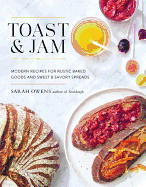
| Publisher: | Roost Books | |
| Genre: | Cooking, Canning & Preserving, Courses & Dishes, Methods, Baking, Bread | |
| ISBN: | 9781611803570 | |
| Pub Date: | August 2017 | |
| Price: | $30 |
| Food & Wine |
by Sarah Owens
Toast and Jam is a cookbook collecting recipes for breads and baked goods, and the spreads and toppings that pair perfectly with them. Its beauty lies in its simplicity; Sarah Owens (Sourdough) invites readers and home cooks to "encourage that which is simple to thrive in abundance," and her recipes reflect that thinking.
Following a thorough introduction--in which Owens spells out the whys and wherefores of different types of grains and gives a detailed how-to on kneading and troubleshooting dough--Toast and Jam is broken into two sections. "Toast" includes a chapter on breads, with basics like Miche (a hard-crusted hearth bread) and Pain de Mie (a lighter, spongier loaf), as well as flavored varietals like Spiced Carrot Levain and a chapter on crackers, cakes and scones. "Jam" follows with a variety of toppings for decorating the toasts: traditional jams (though often boasting nontraditional flavors, like Violet Petal Jam and Prickly Pear and Aperol Jelly), recipes for spreads both savory and sweet (Lemony Herb Chevre) and ideas for fermented and cured toppings and tartines.
Owens's well-written recipes are as much instruction as they are invitation. Come revisit slow foods, she seems to say. Learn to make breads that rise and bake over the course of a day or even two, and jams that reduce for hours. "Relish in leisure that nourishes the body and the spirit"--and take pride in the process as much as the (mouth-wateringly delicious) end result. --Kerry McHugh, blogger at Entomology of a Bookworm
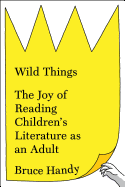
| Publisher: | Simon & Schuster | |
| Genre: | Biography & Autobiography, Literary Criticism, Children's & Young Adult Literature, Personal Memoirs, Literary | |
| ISBN: | 9781451609950 | |
| Pub Date: | August 2017 | |
| Price: | $26 |
| Starred | Biography & Memoir |
by Bruce Handy
"It should go without saying that the best children's literature is every bit as rich and rewarding in its concerns, as honest and stylish in execution, as the best adult literature," Bruce Handy writes in the introduction to his debut, Wild Things. However, children's books, especially picture books, are often snubbed or dismissed by adult readers and critics, though they are "also as complicated, stubborn, contradictory, and mysterious" as any novel written with a grown-up audience in mind. In Wild Things, Handy, a veteran cultural critic and a longtime lover of children's literature, presents an intelligent, thoughtful and often funny critique-cum-defense of kid lit in general and a few classics in particular.
Beginning with Goodnight Moon, he explores the cultural forces that shape these beloved stories and their large, underlying existential themes. Few critics would think to compare The Runaway Bunny with Portnoy's Complaint, but Handy gets away with it--partly because of his obvious delight in the former, which he calls "as incisive a treatise on the parent-child bond" as Philip Roth's novel. Chapters are arranged in a rough chronology, from very early picture books to a few stories for older children, such as Laura Ingalls Wilder's Little House series and E.B. White's masterpiece Charlotte's Web.
Throughout Wild Things, Handy draws on attachment theory, environmental concerns, religious questions, the teaching of literacy and other big, "grown-up" ideas. But the true joy lies in Handy's love for children's lit and his unabashed insistence that it holds treasures for even the most cynical of grown-ups. Like the books it champions, Handy's is surprising, wise, highly entertaining and thoroughly satisfying. --Katie Noah Gibson, blogger at Cakes, Tea and Dreams
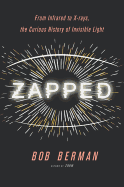
| Publisher: | Little, Brown | |
| Genre: | Optics & Light, Electromagnetism, Science, Physics | |
| ISBN: | 9780316311304 | |
| Pub Date: | August 2017 | |
| Price: | $26 |
| Science |
by Bob Berman
Astronomer and science lecturer Bob Berman (Zoom, The Sun's Heartbeat) may have taken the title of Zapped from the suburban backyard "bug zapper," but his book is a much more comprehensive review of the "invisible light" around us. In a sense, our world of microwaves, cell towers and satellites, X-rays, GPS, radiation leaks and so on puts us all in a cosmic bug zapper. Chronologically, Berman explores the scientists who discovered the light that exists outside the visible spectrum (that of the grade school mnemonic ROY G BIV, representing the colors in decreasing wavelength from red to violet). There's William Herschel who found infrared light (beneath red), Johann Ritter who stumbled on ultraviolet light (beyond violet), as well as Röntgen (the X-ray) and Faraday (electromagnetism). Without these anecdotal and historical interludes and a smattering of illustrations, the necessarily dry nuts and bolts of wavelength and frequency science might make readers scratch their heads.
In making the "invisible visible," Berman also attempts to address urban legends about the dangers of such common appliances as microwave ovens and cellphones. Of the latter, he asks: "Is it okay to warm up your teenager's brain?" and answers: "taking a single hot shower heats far more bodily tissue in one shot than using your cell phone nonstop for a month." Which is not to say that he dismisses the specific dangers of laser pointers, X-rays or prolonged UV sunburn--only that he keeps them in context. Zapped is the story of how we got from the Renaissance scientific argument of whether light is a particle or a wave, to a world where invisible light surrounds us and makes our lives easier and more interconnected. --Bruce Jacobs, founding partner, Watermark Books & Cafe, Wichita, Kan.
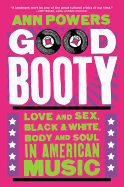
| Publisher: | Dey Street | |
| Genre: | History & Criticism, United States, Music, Genres & Styles, General, Popular Culture, 20th Century, History, Social Science, Pop Vocal | |
| ISBN: | 9780062463692 | |
| Pub Date: | August 2017 | |
| Price: | $26.99 |
| Performing Arts |
by Ann Powers
Readers may never see pop music and sex the same way after Ann Powers's treatment of both in her amazingly comprehensive and penetrating treatise Good Booty: Love and Sex, Black and White, Body and Soul in American Music.
A music critic for NPR, Powers (Weird Like Us) writes with the passion of a good novelist--bringing historical characters to life--but also with a scholarly intelligence and level of erudition that sets her apart. In Good Booty, she argues that pop music in the United States has always been an expression of eroticism and has evolved through historical eras as sexual mores and race relations have shifted. Her scholarship starts in 19th-century New Orleans with Creole dance styles and advances through the Jazz Age, the birth of modern rock and into the "post-human" pop of the new millennium.
Impressively researched and structured, Good Booty exposes the misogyny and homophobia in the rock scene of the 1960s, but also shows how movements of personal liberation led to greater freedom, changing cultural norms and the androgynous glam stars of the 1980s and beyond. At its core are fundamental questions of identity, sexuality and cultural appropriation. The latter is a particularly tricky issue in regards to race relations, as both black and white music evolved and intertwined through Jim Crow and eras of racial oppression. "The answer shifts and shimmies like rhythm itself, like a body in the throes of pleasure." Music, Powers concludes, is about self-expression and self-possession, about claiming one's body and sexuality in an almost mystic union with beauty. Good Booty deepens one's understanding of both history and beauty, and raises the standard for music writing. --Scott Neuffer, writer, poet, editor of trampset
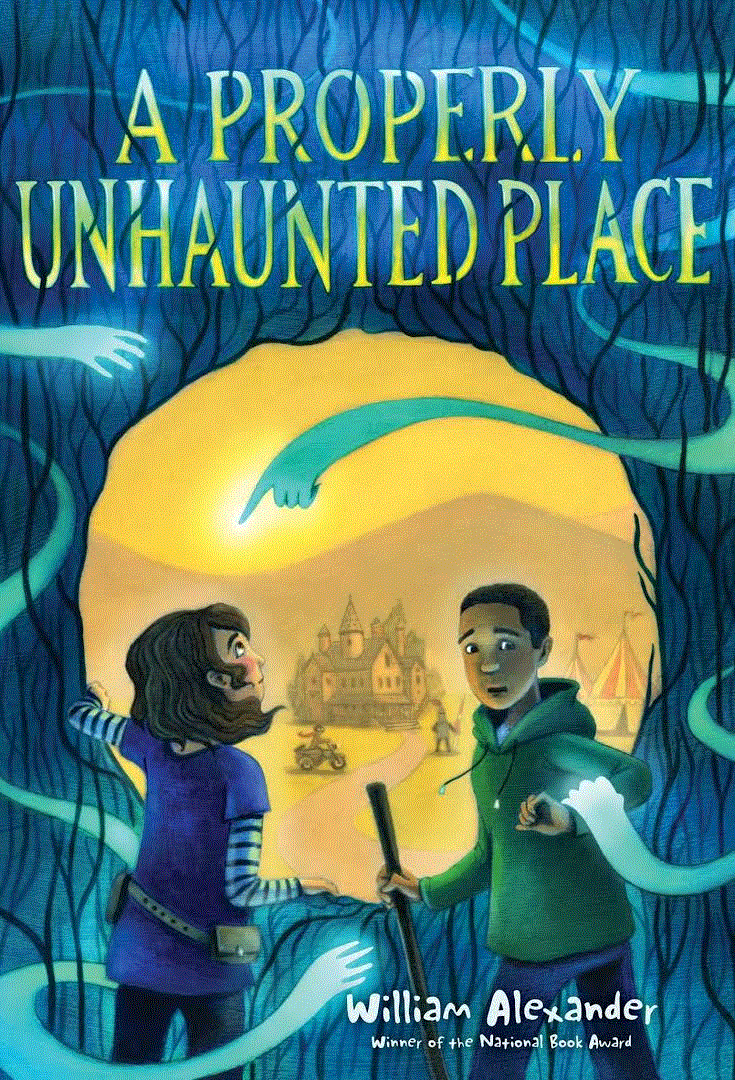
| Publisher: | Margaret K. McElderry/S&S | |
| Genre: | Humorous Stories, Fantasy & Magic, Ghost Stories, Mysteries, Espionage, & Detective Stories, Books & Libraries, Juvenile Fiction | |
| ISBN: | 9781481469159 | |
| Pub Date: | August 2017 | |
| Price: | $16.99 |
| Starred | Children's & Young Adult |
by William Alexander, illust. by Kelly Murphy
Rosa Ramona Diaz is not impressed when she and her mother move from the city to a basement apartment underneath the Ingot Public Library. Rosa's mom is the new library appeasement specialist, a job that involves calming down ghosts who get upset and keeping the really nasty ones distracted. But there are no ghosts in Ingot. In fact, it's "the only unhaunted place that Rosa had ever heard of," and nobody knows why. Which means that when Rosa goes out to explore, she leaves her "tool belt" behind.
While exploring, Rosa meets Jasper Chevalier, who is dressed as a squire and following his dad, "Sir Morien, Black Knight of Arthur's court and table." They make their way to the splendid Ingot Renaissance Festival, where "centuries smacked into each other" in a hodgepodge of historical reenactment. When a beast (mostly mountain lion, with "an antlered deer skull... where its head used to be") charges out of the forest, Rosa springs into action. She's got no salt, matches or chalk, but she's been well trained by her mom. Grabbing a roll of copper wire, Rosa manages to fend off the "rearranged wildlife," but she knows it's only the beginning. Ghost-free Ingot has just had a haunting.
Though primarily about ghosts, A Properly Unhaunted Place is also about respect; Rosa's mom doesn't hunt spirits or banish them. Rather, she appeases them using the powers of listening and speaking their language--she even offers her own voice (literally) and the beast absconds with it! Kelly Murphy's illustrations help bring life to William Alexander's (Goblin Secrets) succinct gem: a meticulously crafted world so tangible it feels like an alternate version of our own. --Lynn Becker, blogger and host of Book Talk, a monthly online discussion of children's books for SCBWI
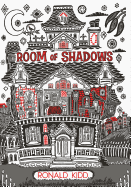
| Publisher: | Albert Whitman | |
| Genre: | Bullying, Horror, Mysteries, Espionage, & Detective Stories, Social Themes, Juvenile Fiction | |
| ISBN: | 9780807568057 | |
| Pub Date: | August 2017 | |
| Price: | $16.99 |
| Children's & Young Adult |
by Ronald Kidd
Short, skinny, 13-year-old David Cray mostly keeps to himself--until he experiences "a different kind of anger." He's got plenty making him mad: his father's run off with another woman, leaving David and his mother to relocate to a ramshackle old Victorian in downtown Baltimore. "You say goodbye to your friends. You get in the car and drive off. You don't look back."
Starting eighth grade at Marshall Middle "with a bunch of strangers" was bad enough, but too soon David is confronted on his way home by bully Jake demanding his takeout crab-cake dinner. David snaps and suddenly Jake is on the ground, beaten and bloody. At the police station, David insists without irony to Sergeant Clark, "I don't like violence"; Clark reluctantly gives David "a break." But the assaults don't stop there: three more gruesome incidents occur, each claimed by "The Raven" via notes written in verse. That David is never far from the violent scenes makes the school principal and Sergeant Clark question David's protestations. Only his new friend Libby Morales believes in his innocence; together, the dynamic duo pursues the Raven, bravely confronting otherworldly forces.
Writer/librettist/playwright Ronald Kidd (Night on Fire; Monkey Town) reveals in his author's note that Room of Shadows was inspired by Edgar Allan Poe's "squalid and sad" final days: in intending to give Poe "a fitting death," his goal "wasn't to portray history but to fix it." Despite occasionally implausible plotting (causing a child's hospitalization would warrant severe consequences, for example), Kidd's latest has plenty of chills and thrills that might even encourage new Poe enthusiasts. He deftly unleashes Poe's enraged spirit to tell a tale--in Poe's words to David--"as horrifying as it [is] irresistible." --Terry Hong, Smithsonian BookDragon